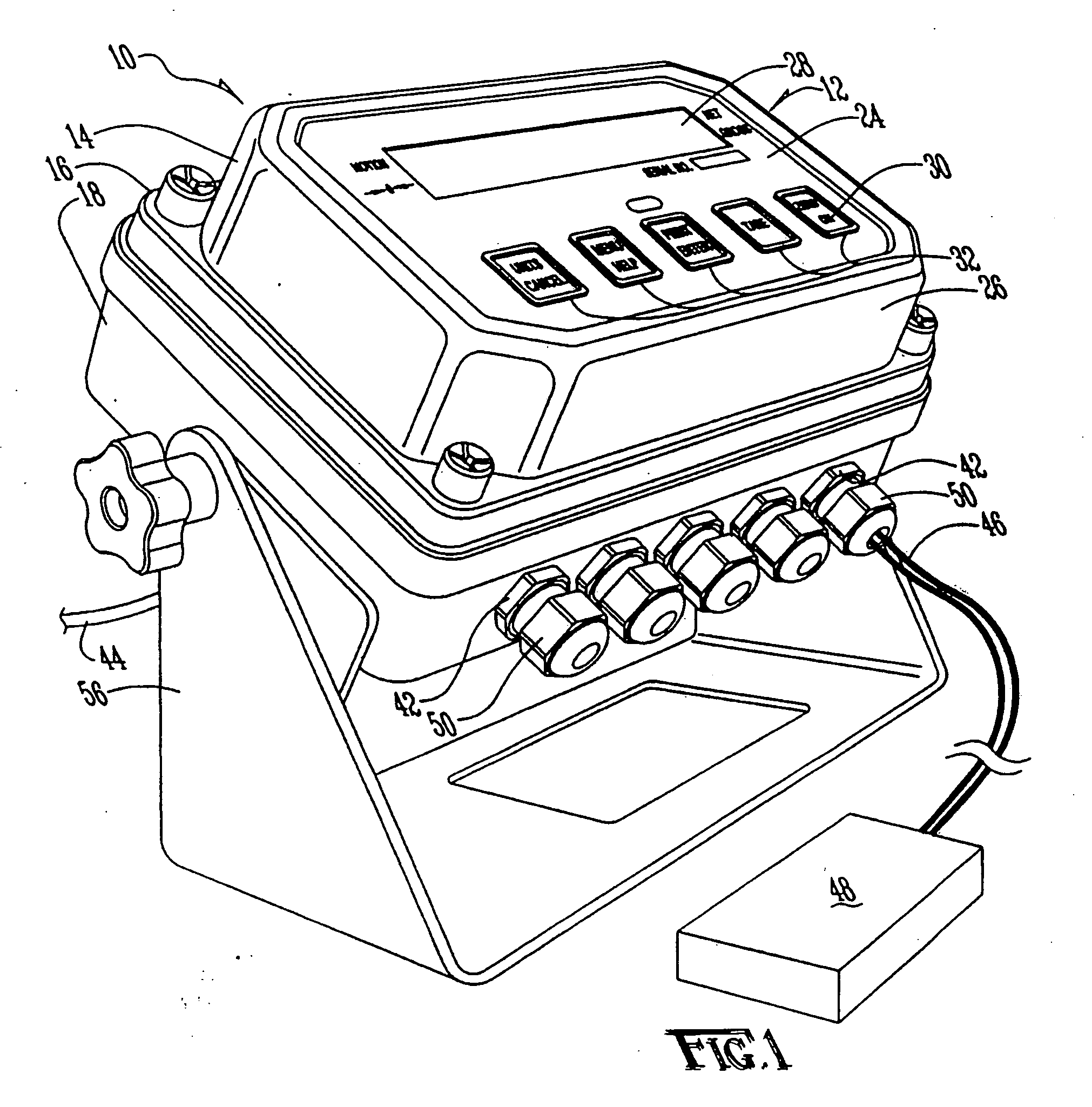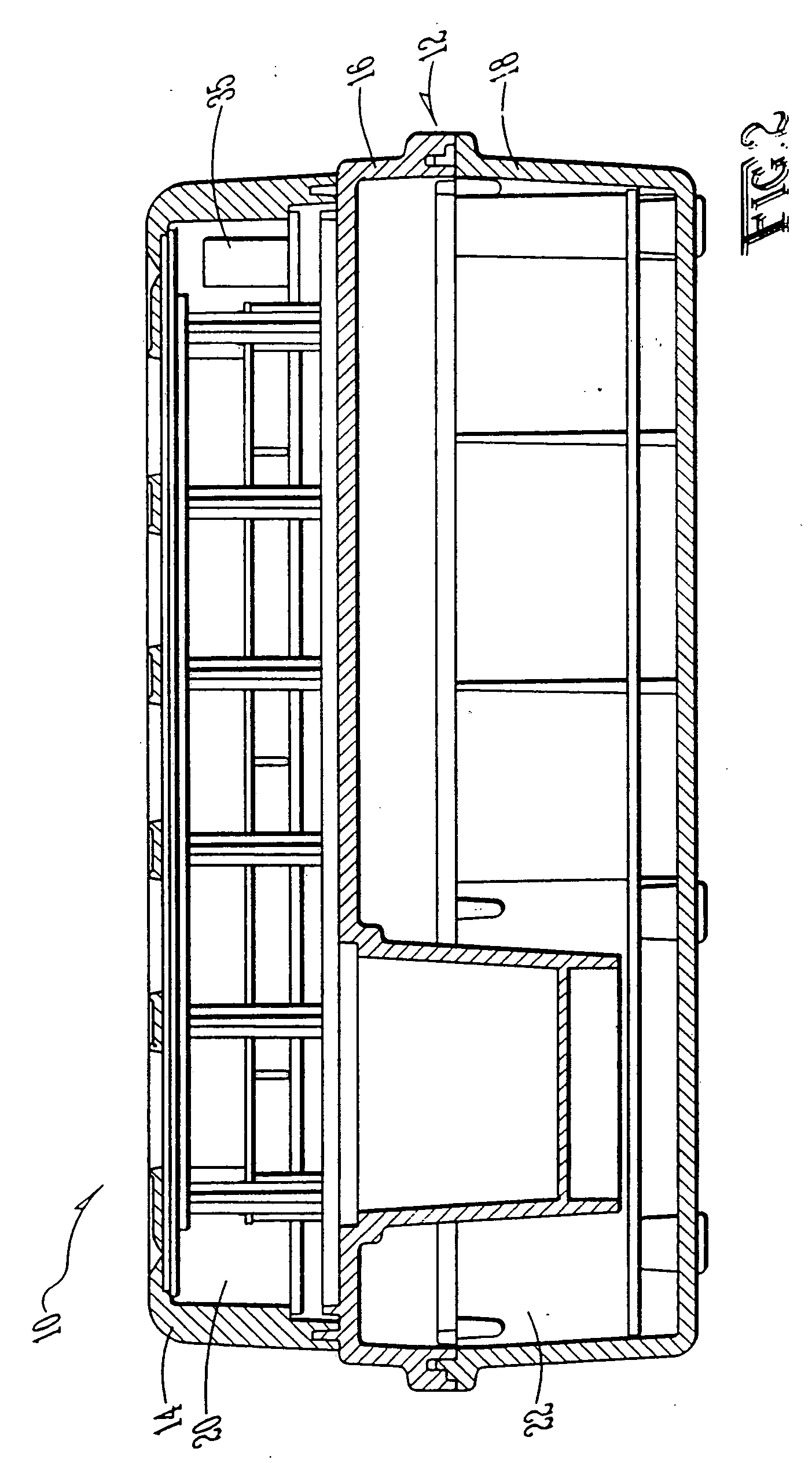Most have common weaknesses that present problems particularly when the
load cell indicators are used in rough, washdown environments.
This
high pressure spray will often seep past gaskets and seals, leaving the internal electrical connectors and electronic components wet.
Since the cleaning solutions used are typically slightly conductive, any solution that finds its way to the incoming
AC power connector will often result in damage, which can range from minor
corrosion of wiring and
printed circuit board traces to arc-over and destruction of the
AC power connector and related circuitry.
This damage often limits the useful life of an instrument to mere weeks.
If the indicator uses a plastic membrane keypad, which is by far the most common type of
front panel found on
load cell indicators, this activity will quickly result in a damaged keypad.
Depending on the design on the specific indicator, a damaged keypad may be replaced, or it may mean replacement of the entire indicator.
Again, this potential for damage limits the lifetime of indicators in some environments.
While this style of double enclosure mounting may reduce
high pressure fluid infiltration in the indicator enclosure, it also limits operator access to the indicator, sometimes excessively so.
The effectiveness of this mounting style is frequently reduced by the tendency of operators to forget to latch the front lid, leaving the indicator exposed to the very
high pressure spray the lid was intended to prevent.
The choice of display can be problematic, as many display types with outstanding
visibility (such as a vacuum florescent display—VFD) have high
power consumption.
Indicators that use VFDs often have no provision for running from battery power, limiting their usefulness as a portable device.
Indicators with seven segment displays are thus limited in displaying information, which makes setup and
troubleshooting cryptic and difficult.
However, many digital load
cell indicators use LCD modules that require ambient light for the display to be visible to the user, which makes the instrument difficult to use in dark or uncertain lighting.
High temperature washdown followed by extended use in cold temperature environments can lead to condensation forming on the enclosure.
If the seals around the cables, display, and keypad are less than perfect, and they usually are, condensation can also form on the inside of the enclosure, which can wet the electronic components, circuit boards, and connectors.
Display
fogging is also common in this situation.
These conditions conspire to limit the effectiveness of the indicator.
If internal access to the enclosure is desired, such as to replace a load
cell cable or
power cable, the
technician performing the procedure will spend quite a bit of time and
frustration removing all the fasteners and sealing material to
gain access to the internal connections of the indicator.
This limitation leads to the use of external hardware, such as summing boxes, to condition multiple load cell signals (as might be provided by a large tank or platform scale) for use with common indicators.
For many load cell indicators, this is simply not possible, as there is no allowance for field customization of the
software code contained inside the indicator controller, and the manufacturers are unable to update
software once the indicator has been manufactured.
During integration and testing, problems, bugs, or unforeseen circumstances will often arise that require the
machine controller software to be modified.
If the advanced load cell indicator / controller is not designed with this in mind, the
upgrade might require significant disassembly of the indicator and associated hardware to replace a physical electronic device containing the controller software.
This requirement limits the overall size and weight of the instrument and also requires a
portable power source, such as a battery.
Some do, but require so much power that the only practical option is a physically large battery mounted external to the indicator enclosure.
Any externally mounted battery will require wiring to provide power to the indicator, and that wiring introduces at least two additional weaknesses into the
system: the wiring must be sealed to prevent leakage where it enters the indicator enclosure, and exposed wiring is vulnerable to damage.
Load cell indicators used in harsh environments are often damaged.
When this occurs, many users will desire to troubleshoot the indicator to determine the cause of the failure, and then will often elect to attempt a repair.
Load cell indicators are relatively complicated and include delicate
electronic instruments, so
troubleshooting may call for the use of skilled electronic technicians and other highly trained and costly personnel equipped with an assortment of specialized tools.
A user or
technician who may attempt
troubleshooting but who may lack the proper training or the right tools can often do more harm than good when provided with ready access to all of the electronic components of these relatively complex, delicate instruments.
Many load cell indicators are difficult to calibrate.
Some indicators have a rather lengthy and complicated calibration procedure that is not obvious without supplemental
documentation, so if the calibration procedure instructions are misplaced, that scale is unusable.
 Login to View More
Login to View More  Login to View More
Login to View More 


